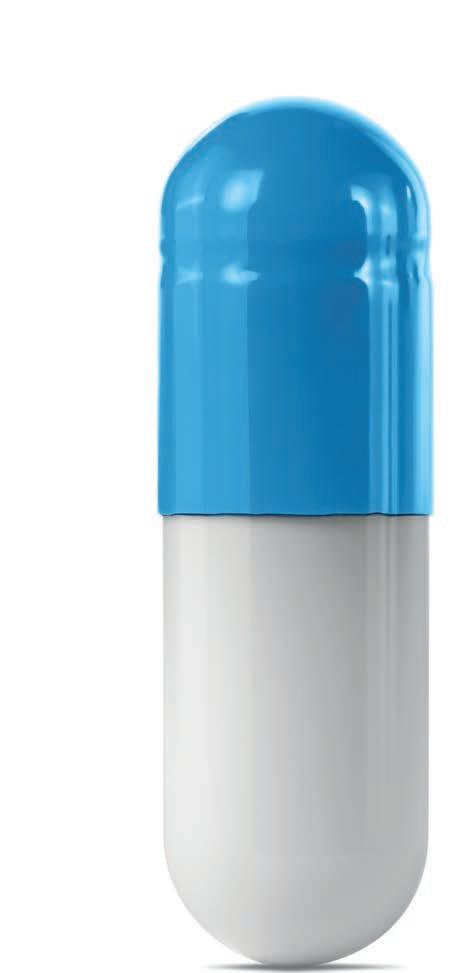16 THE S&O ONE TO ONE
Lord of the dance The Royal Ballet’s principal podiatrist, Denzil Trebilcock, explains how the art of dance interacts with the hard science of biomechanics. Interview Matt Lamy
W
hen an audience sits rapt, watching the dancers of the Royal Ballet perform, the idea that these supreme athletes with perfect poise, form and balance could suffer from corns and ingrowing toenails is probably the furthest thing from the onlookers’ minds. But for the Royal Ballet and Royal Ballet School’s principal podiatrist, Denzil Trebilcock, the issues the dancers face – and the major effect that seemingly minor problems can have – are very familiar. ‘The range of complaints I see is fairly varied,’ Denzil says. ‘A lot of what I do is a combination of biomechanics and completely classical routine care: all the delights and horrors of soft corns, ingrowing toenails and the excruciating wounds that dancers get. But equally, the important thing to remember is that if a dancer gets something as innocuous as a soft corn, that will alter how they go into a position to try to avoid loading. Unless we deal with these small things, it can have a knock-on effect that causes impingements or restrictions, or overwork.’ Denzil’s reference to biomechanics is a clue to how he came to work with the Royal Ballet. He took a degree in physics at King’s College London, but after graduating and being underwhelmed by career options, someone suggested human mechanics might be of interest. ‘I ended up sitting in with a podiatrist and was introduced to this wonderful world of classical mechanics associated with how humans move – all the relevant forces, mass times acceleration, Young’s modulus in terms of how tendons work,
and how much strain you can put them under. It all fitted really perfectly with the areas that I had enjoyed while studying physics,’ he says.
Dancing return After studying podiatric medicine at University College London and the London Foot Hospital, Denzil worked for the NHS at Lambeth Primary Care Trust (PCT) for five years, becoming Lambeth PCT department lead for the musculoskeletal foot and ankle centre. At the same time, he also enjoyed working in private practice; it was through this that his connection – or more accurately a reconnection – with the Royal Ballet occurred. ‘I was working for a physiotherapy clinic and the lead physiotherapist was contacted in an emergency to see if she knew a podiatrist who could look after a ballerina’s feet. She called me, so I went in on my day off and I spent a really productive hour or two with Leanne Benjamin, who at the time was principal dancer at the Royal Ballet,’ Denzil says.
‘Afterwards, I thought it was fun but nothing more. However, Leanne went back to the Royal Opera House and must have said she’d been treated by me. The next day I was contacted by the Royal Ballet’s head of healthcare, who said they were in desperate need of a podiatrist, and could I go in for a chat. I graduated in 2005 and this was in 2009, so it was still all very new to me and I hadn’t specifically dealt with dancers at that time, so it was a bit nerve-racking. ‘Funnily enough, my grandmother used to be in charge of all the ballet shoes at the Royal Ballet from the 1960s to the 1980s. Weekends during my childhood were spent walking round this very old, strange place where all these dancers were leaping and jumping. So I suppose from a very early age I was primed and aware of what ballet was.’
A new focus Although the world of ballet that Denzil re-entered was familiar, it was about to undergo an overhaul of its approach to dancers’ health and wellbeing.
Digital goals During the pandemic, Denzil has been using his technological background to think about other ways he can help patients. ‘One of the things that I’ve always had at the back of my mind is the concept that, as a profession, we need to be face-to-face with people in order to do what we do,’ he says. ‘So I’ve been looking at ways to provide a distanced form of analysis that we can use to establish whether or not there is a need for further treatment. I’m learning the programming needed in order to design various apps for that.’
T H E P O D I AT R I ST J U LY/AU G U ST 2 0 2 1
16-17 SandO one to one_THE PODIATRIST JULY AUG_Podiatry Now.indd 16
22/06/2021 12:45








